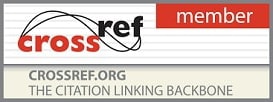Impact Factor: Impact Factor(RJIF): 5.3
International Journal of Home Science
2016, VOL. 2 ISSUE 3, PART C
Nutritional status assessment of Ghosi Gujjar women of Ajmer district with special reference to anemia
Author(s): Sehar Siddiqui, Vibha Bhatnagar and Sarla Lakhawat
Abstract:
Inrnthe present scenario women are considered as the most vulnerable andrnmarginalized, section of the society. Though the condition of women in thernurban scenario is much empowered but still the rural women is not yet upliftedrnthe causes can be multifarious. Nutrition is one of the most important aspectrnof life. It not only helps individual to live a sound and healthy life but alsornguide us to cater different nutritional problems. Women are always on marginalrnlines when talked about nutrition. A study was conducted with the objective tornassist the nutritional status of ghosi gujjar non pregnant and non-lactatingrnwomen (18-45 years). The study was conducted in two villages namely Somalpurrnand Rasoolpura of Ajmer district Rajasthan. Sixty-Sixty women were selected forrnnutritional assessment from both the villages. Nutritional status was assessedrnby the help of self-structured interview schedule. Dietary intake of thernrespondents was collected using 24 hour recall method. Hemoglobin was alsornassessed to check the prevalence of anemia. The mean hemoglobin level of thernrespondents was10.84±1.94gm/dl. Distribution of respondents based on therncategories of anemia clearly depicts that4.16% had normal hemoglobin level,rn82.5% were having mild anemia 9.16% were having moderate anemia while 4.16%rnwere having severe anemia the condition was not worse because of the foodrnconsumption pattern of the respondents who mainly consumes non vegetarianrnfoods. Findings revealed that 26.66 per cent respondents were in normal range butrn48.33 per cent respondents were overweight and 20 per cent were underweightrnfollowed by 5 per cent obese. Majority of the respondents were non vegetariansrni.e. 100 per cent as they were practicing Islam. Further ‘Z’ values were calculated between the nutrient intake and RDA which revealedrnthat the value of iron and beta carotene (p<0.05) was comparatively lowerrnthan RDA, whereas no significance difference was found in protein, fat,rncalcium, zinc, and ascorbic acid.
Inrnthe present scenario women are considered as the most vulnerable andrnmarginalized, section of the society. Though the condition of women in thernurban scenario is much empowered but still the rural women is not yet upliftedrnthe causes can be multifarious. Nutrition is one of the most important aspectrnof life. It not only helps individual to live a sound and healthy life but alsornguide us to cater different nutritional problems. Women are always on marginalrnlines when talked about nutrition. A study was conducted with the objective tornassist the nutritional status of ghosi gujjar non pregnant and non-lactatingrnwomen (18-45 years). The study was conducted in two villages namely Somalpurrnand Rasoolpura of Ajmer district Rajasthan. Sixty-Sixty women were selected forrnnutritional assessment from both the villages. Nutritional status was assessedrnby the help of self-structured interview schedule. Dietary intake of thernrespondents was collected using 24 hour recall method. Hemoglobin was alsornassessed to check the prevalence of anemia. The mean hemoglobin level of thernrespondents was10.84±1.94gm/dl. Distribution of respondents based on therncategories of anemia clearly depicts that4.16% had normal hemoglobin level,rn82.5% were having mild anemia 9.16% were having moderate anemia while 4.16%rnwere having severe anemia the condition was not worse because of the foodrnconsumption pattern of the respondents who mainly consumes non vegetarianrnfoods. Findings revealed that 26.66 per cent respondents were in normal range butrn48.33 per cent respondents were overweight and 20 per cent were underweightrnfollowed by 5 per cent obese. Majority of the respondents were non vegetariansrni.e. 100 per cent as they were practicing Islam. Further ‘Z’ values were calculated between the nutrient intake and RDA which revealedrnthat the value of iron and beta carotene (p<0.05) was comparatively lowerrnthan RDA, whereas no significance difference was found in protein, fat,rncalcium, zinc, and ascorbic acid.
Pages: 159-161 | 358 Views 148 Downloads
How to cite this article:
Sehar Siddiqui, Vibha Bhatnagar, Sarla Lakhawat. Nutritional status assessment of Ghosi Gujjar women of Ajmer district with special reference to anemia. Int J Home Sci 2016;2(3):159-161.






